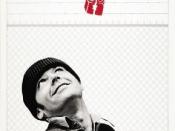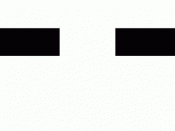Includes works cited, annotated along each quote of the essay. MLA format. Includes 4 written sources, 4 internet sources. All works cited proven and true
here is a paragraph:
Characterization is essential in the portrayal of the duel between laughter and control in One Flew Over the Cuckoo's Nest. The first thing McMurphy notes on the ward are the patient's faces, which are neutral and depressed, which motivates him to do something about it. Chief Bromden notes, "he's being the clown working at getting some of the guys to laugh. It bothers him that the best they can do is grim weakly" (Kesey 92). For nurse Ratched, laughter is dangerous. If someone laughs, he is expressing his emotions of happiness, which could lead to a feeling of individualism and in consequence a "rebel" attitude and disobedience of her totalitarian rule. Nig Nurse "speaks for the fixed patter, the unbreakable routine, the submission of the individual will to mechanical humorless control" (Draper 1991).
Nurse ratchet and McMurphy represent the eternal fight of good and evil, the yin and yang. They represent the battle between human humor and mechanical order in daily life.


